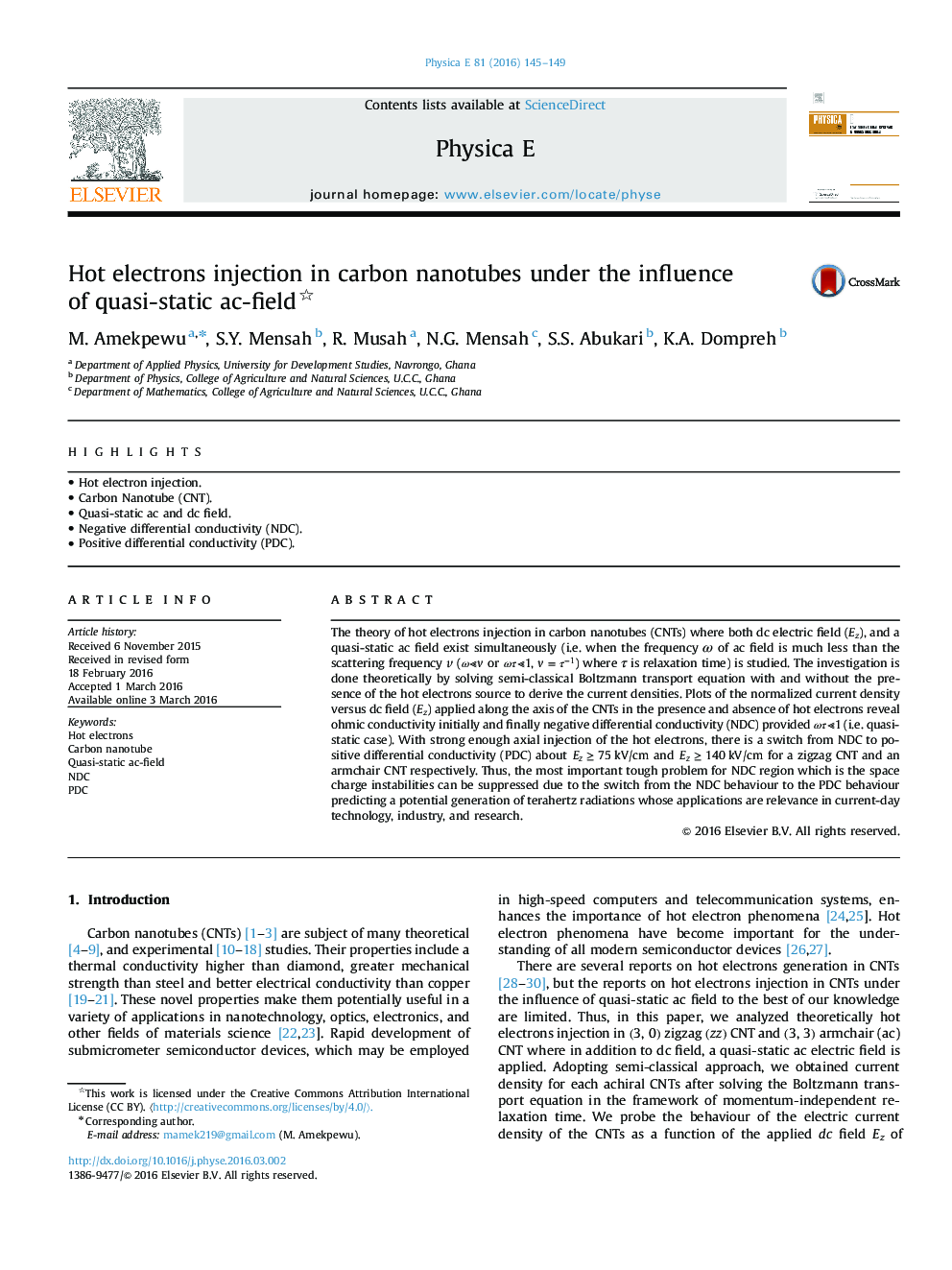| Article ID | Journal | Published Year | Pages | File Type |
|---|---|---|---|---|
| 1543542 | Physica E: Low-dimensional Systems and Nanostructures | 2016 | 5 Pages |
•Hot electron injection.•Carbon Nanotube (CNT).•Quasi-static ac and dc field.•Negative differential conductivity (NDC).•Positive differential conductivity (PDC).
The theory of hot electrons injection in carbon nanotubes (CNTs) where both dc electric field (Ez), and a quasi-static ac field exist simultaneously (i.e. when the frequency ω of ac field is much less than the scattering frequency v (ω⪡vω⪡v or ωτ⪡1ωτ⪡1, v=τ−1v=τ−1) where τ is relaxation time) is studied. The investigation is done theoretically by solving semi-classical Boltzmann transport equation with and without the presence of the hot electrons source to derive the current densities. Plots of the normalized current density versus dc field (Ez) applied along the axis of the CNTs in the presence and absence of hot electrons reveal ohmic conductivity initially and finally negative differential conductivity (NDC) provided ωτ⪡1ωτ⪡1 (i.e. quasi- static case). With strong enough axial injection of the hot electrons, there is a switch from NDC to positive differential conductivity (PDC) about Ez≥75kV/cm and Ez≥140kV/cm for a zigzag CNT and an armchair CNT respectively. Thus, the most important tough problem for NDC region which is the space charge instabilities can be suppressed due to the switch from the NDC behaviour to the PDC behaviour predicting a potential generation of terahertz radiations whose applications are relevance in current-day technology, industry, and research.
